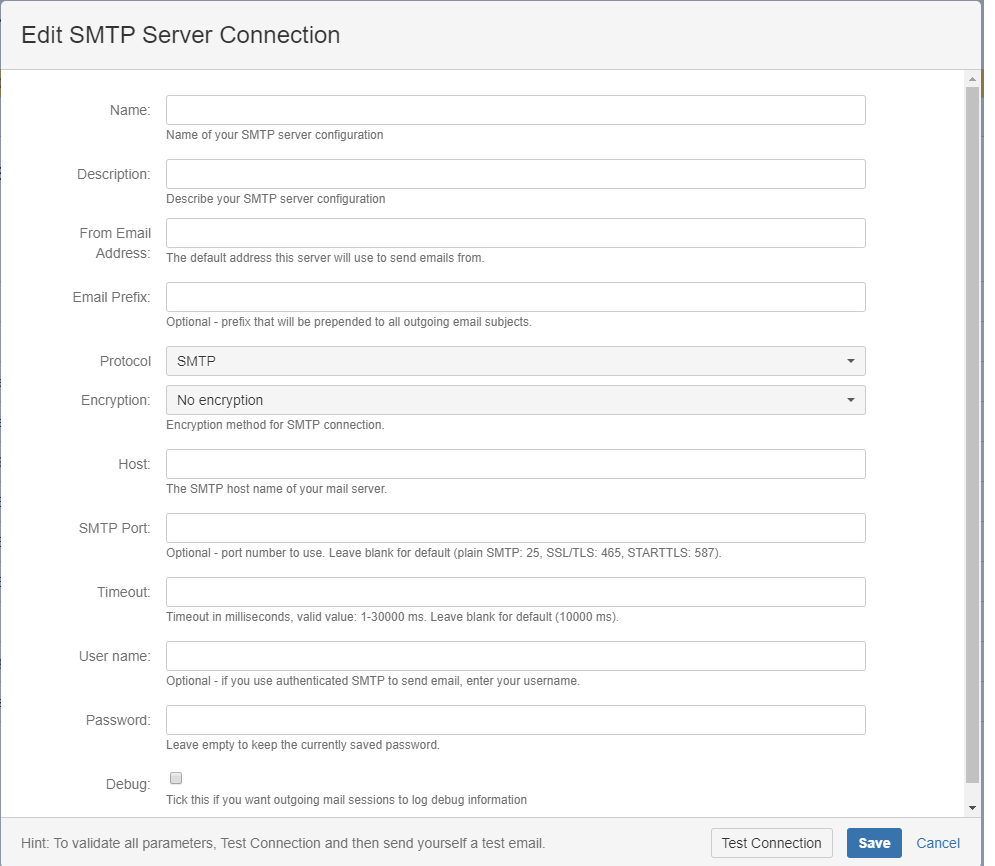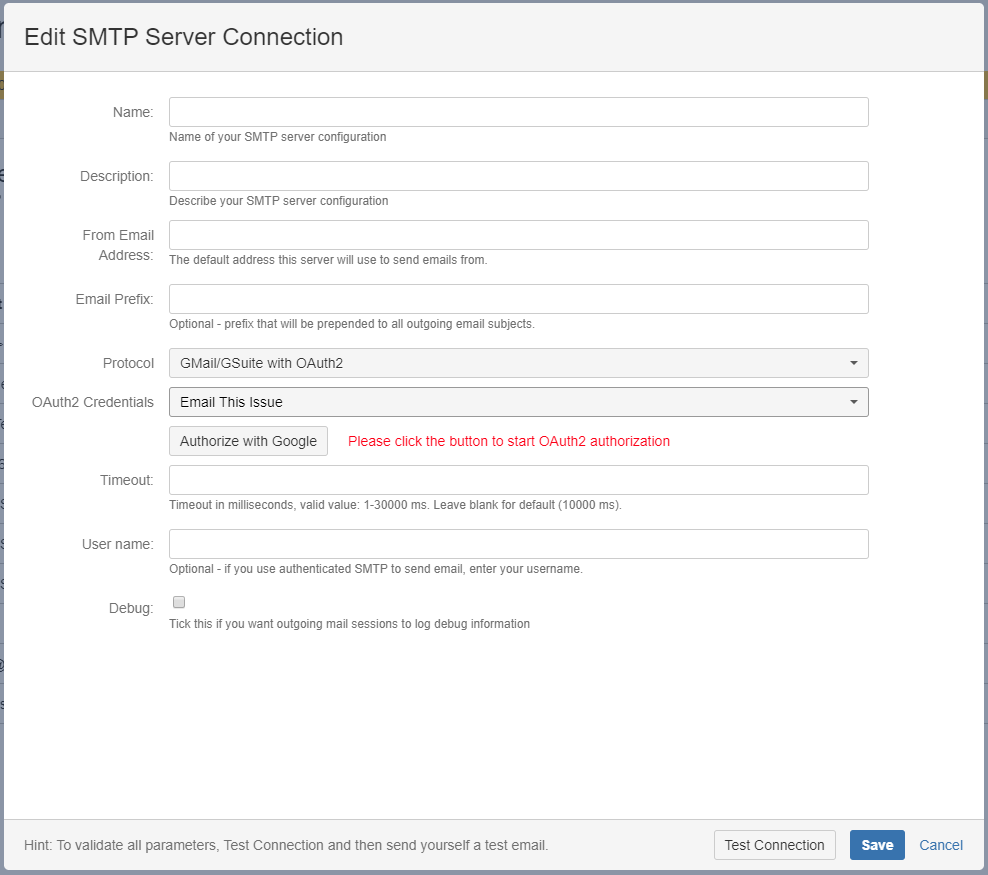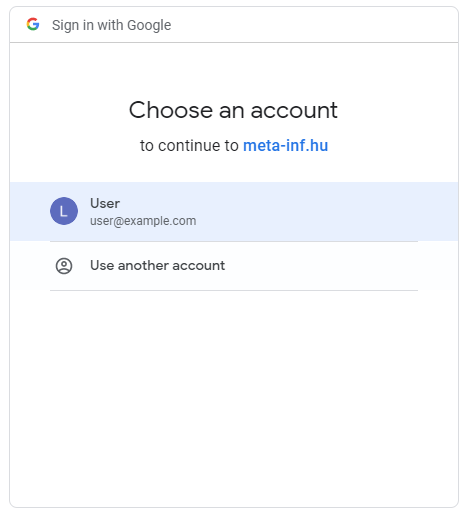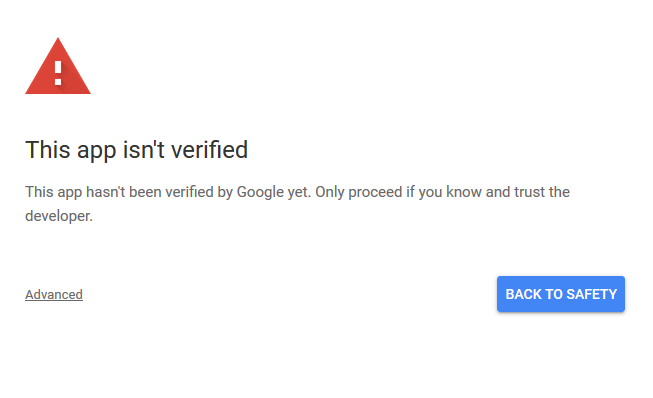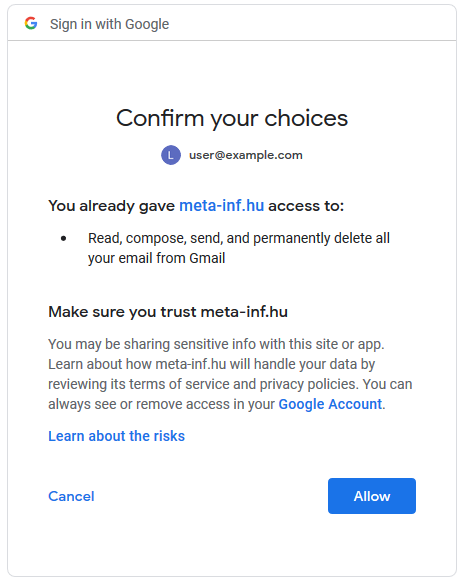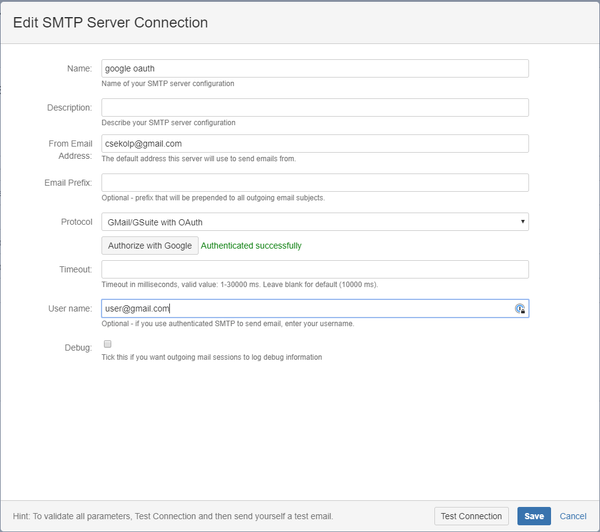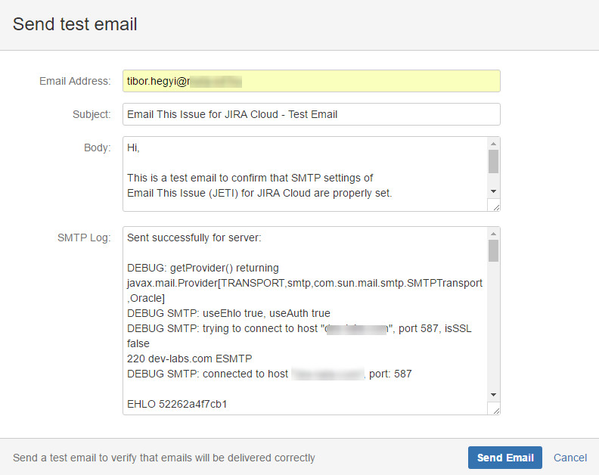Outgoing Mail Connections
Documentation moved
Thank you for visiting our old product documentation site. Note that we are in the process of migrating our product documentation and soon we will not store or update our documentation here.
Please navigate to our new documentation site and update your bookmarks accordingly. If you're looking for the former content of this page, click here.
Unlike Jira, Email This Issue supports the use of multiple SMTP Servers. The list of SMTP Servers is accessible from the Emails / SMTP Servers menu.
Built-in Outgoing Mail Connection
Email This Issue comes with a built-in Outgoing Mail Connection. This is available right after installation. The purpose of this Outgoing Mail Connection is to evaluate Email This Issue and start sending emails right after installation, but we do not recommend it for production use.
Instead, we highly recommend you configure an Outgoing Mail Connection of your choice from the professional email provider, like Google, Microsoft, Yahoo, etc. or your own corporate Mail server.
Please note using this Built-in connection, emails will always be sent from no-reply@<sitename>.jeti.cloud and this cannot be changed.
Default Outgoing Mail Connection
One of the SMTP Servers may be marked as Default. Unless you define to use another connection, the Default Connection is used to send the emails.
You can define the connection to use for different projects, type or issues by creating an Advanced Email Configuration with the proper scope.
Outgoing Mail Connection dialog
Email This Issue supports login and OAuth authentication mechanisms for Smtp Servers. You can select it by selecting the correct protocol:
- SMTP: log in with username and password
- OAuth for Gmail/Gsuite: OAuth2
The content of the dialog changes based on the authentication method you select.
Login
plain SMTP with optional SSL/STARTTLS encryption. If your SMTP server requires encryption, authentication, you can fill the fields below.
OAuth 2.0 Settings
OAuth authentication is currently supported for both Google and Microsoft 365 accounts.
If you want to use OAuth 2.0 authentication, select this option with the appropriate protocol. A new dropdown list and button will appear below the protocol selector.
OAuth Settings for Google
- Select the Client Credentials you created on the credentials page
- Enter the user name to the SMTP Server you want to use
- Click on the "Authorize with Google" button to grant access to Email This Issue to send emails from your account
- In the dialog select the account which belongs to the email address you use for login:
If you have multiple Google accounts select the one which's email matches the username in the SMTP Server dialog. Emails will be sent from that account - If you get this warning, click Advanced
and then "Go to meta-inf.hu (unsafe)": - Confirm your choice:
Click "Allow"
Now you can send emails in Email This Issue from Gsuite with OAuth Authentication.
If you want to revoke the access from Email This Issue to your Gmail account, you can do this the by visiting Account Settings
Gsuite warning
Please note that starting from 2020 June 15, Less Secure Apps will not be supported in GSuite:
Authentication should be done using OAuth2
Test SMTP Connection
While adding or editing an SMTP server connection, you can test if the connection details are correct.
Send Test Email
To check whether the SMTP server is capable of sending out emails to a certain email address, use the Send Test Email function. You can access the Send Test Email dialog from the actions (...) menu of the SMTP servers.

